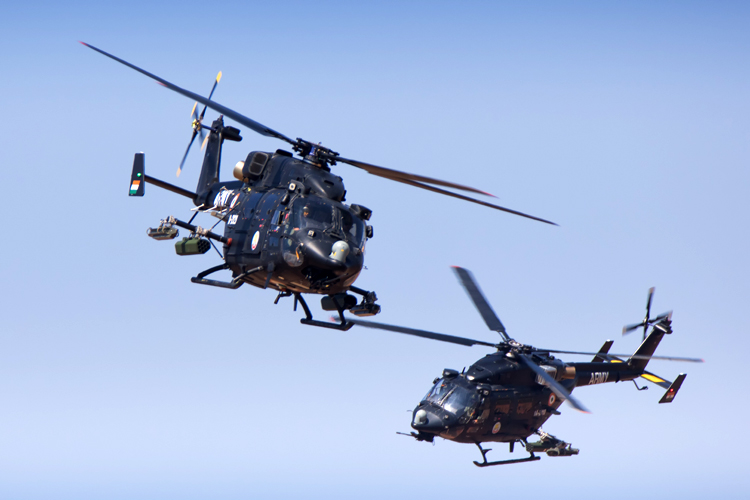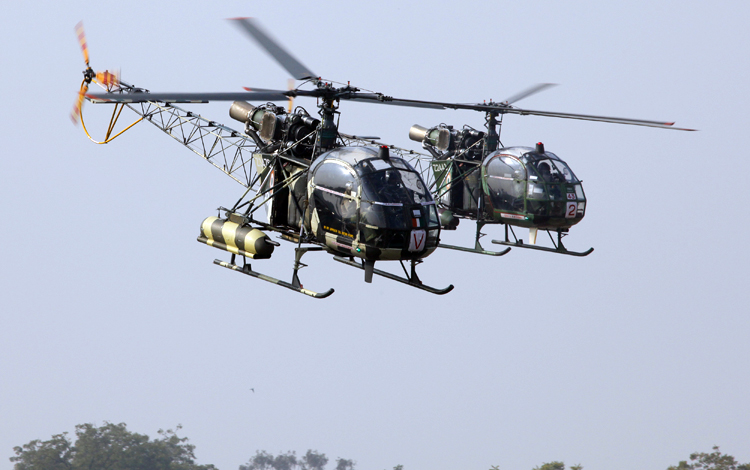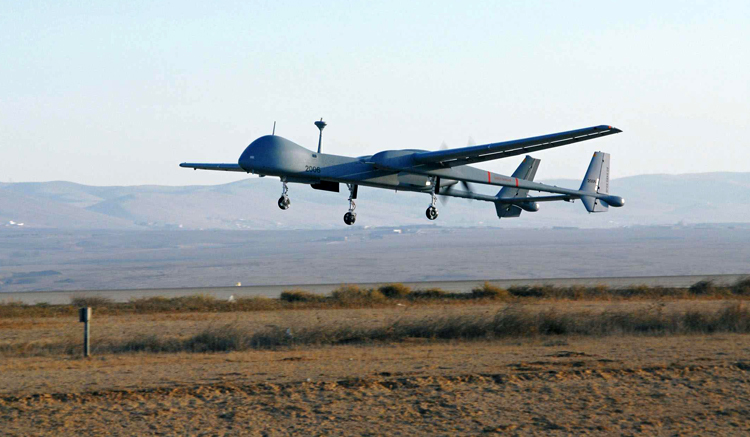INDIAN ARMED FORCES CHIEFS ON OUR RELENTLESS AND FOCUSED PUBLISHING EFFORTS

The insightful articles, inspiring narrations and analytical perspectives presented by the Editorial Team, establish an alluring connect with the reader. My compliments and best wishes to SP Guide Publications.

"Over the past 60 years, the growth of SP Guide Publications has mirrored the rising stature of Indian Navy. Its well-researched and informative magazines on Defence and Aerospace sector have served to shape an educated opinion of our military personnel, policy makers and the public alike. I wish SP's Publication team continued success, fair winds and following seas in all future endeavour!"

Since, its inception in 1964, SP Guide Publications has consistently demonstrated commitment to high-quality journalism in the aerospace and defence sectors, earning a well-deserved reputation as Asia's largest media house in this domain. I wish SP Guide Publications continued success in its pursuit of excellence.
- Operation Sindoor: Resolute yet Restrained
- India’s Operation Sindoor Sends a Clear Message to Terror and the World – ‘ZERO TOLERANCE’
- Japan and India set forth a defence cooperation consultancy framework, talks on tank and jet engines
- Terrorist Attack in Pahalgam in Kashmir: Unfolding a long surgical war against PAK
- Lt General Pratik Sharma takes over Command of Indian Army's Northern Command
New Army Aviation Brigade
The function of the new army aviation brigade is largely for Intelligence, Surveillance and Reconnaissance (ISR) activities but it can support the Army for other tasks including quick reconnaissance by commanders, induction and de-induction of troops with full battle loads and support equipment, casualty evacuation and the like
 |
The Author is Former Director General of Information Systems and A Special Forces Veteran, Indian Army |

In March 2021, the Indian Army hadraised a new Army Aviation Brigade at Missamari in Assam close to Tezpur though the news emerged only in October. Three squadrons of this new aviation brigade are operating from the Missamari Army Aviation Base. The equipment profile of this brigade includes armed Advanced Light Helicopters (ALH), Cheetah helicopters and Heron Unarmed Aerial Vehicles (UAVs). The brigade is mandated with the task of increasing surveillance along the LAC in the Eastern sector. The new Army Aviation Brigade enables Eastern Command to coordinate actions and to have a more localised control.
There is increase of Chinese activities in the Eastern sector. On October 8, an Indian publication, citing government sources, reported that Indian troops had briefly detained some 200-300 People’s Liberation Army (PLA) soldiers who had intruded into Tawang in Arunachal Pradesh before pushing them back. However, China attacked the Indian media for spreading fake news. On the eve of the 13th round of Corps Commander-level talks at Moldo in Eastern Ladakh on October 10, Army Chief General M.M. Naravane had mentioned that China’s increased infrastructure development along the LAC meant that it is there to stay, and it is a matter for concern, even as India will match the deployment.
The notable feature in the new aviation brigade is the Israeli Remotely Piloted Aircraft (RPA) ‘Herons’ which have been transferred from under control of the Artillery to the Army Aviation control
The function of the new aviation brigade is largely for Intelligence, Surveillance and Reconnaissance (ISR) activities of the Army but it can support the Army for other tasks as well on the LAC including quick reconnaissance by commanders, induction and de-induction of troops with full battle loads and support equipment, casualty evacuation and the like.
The notable feature in the new aviation brigade is the Israeli Remotely Piloted Aircraft (RPA) ‘Herons’ which have been transferred from under control of the Artillery to the Army Aviation control on September 15, 2021. According to a source, the artillery drone pilots have now moved to the Aviation Corps as part of the change. These RPAs (Heron MK-1) are keeping a close watch on activities of the PLA. The Heron MK-1 has an endurance of about 24-30 hours and can transmit back live video feed and images of about 200-250 km (range). Concurrently the Army is awaiting upgrades of these Herons as well new satellite link-enabled RPAs.
One good news is that the Army will get four Heron MK-2 UAVs which are being shipped from Israel to India after being procured under emergency contract. As reported in these columns earlier, the earlier plan was to lease the Heron MK-2 from Israel. However, this had to be reportedly changed to direct purchase at Israel’s instance since its experience of leasing by a European country ran into problems. The Heron MK-2 drones have longer endurance than its predecessor, and come with a more powerful engine and better radar.
Army wants to revive and implement the ‘Project Cheetah’ earliest under which the military’s Heron UAVs will be upgraded with satellite links and armed with Israel’s help
It was also reported in these columns earlier that the Army wants to revive and implement the ‘Project Cheetah’ earliest under which the military’s Heron UAVs will be upgraded with satellite links and armed with Israel’s help. With satellite-links, the drones will have almost unlimited range of transmission enabling these systems to be fully exploited to their endurance capabilities. In the first phase of Project Cheetah, the UAVs are to be upgraded, and in the second phase they are to be armed with missiles.
How long Project Cheetah will take is anybody’s guess because the Indian Air Force (IAF) which is the lead agency for this project will reportedly be budgeting for this programme only in the later quarter of next fiscal. Considering the aggressive posture of China, government needs to accord Project Cheetah top priority and make the funds available at the earliest since thereafter the upgrades and fitment of missiles on the Heron UAVs will take time and since it may not be possible to make all available for upgrades together since the tasks along the LAC cannot be neglected.

There has been renewed push to fill up the existing squadrons of ALH (Dhruv) and its weaponised version ALH (Rudra) to their sanctioned strength with the Rudra helicopters also providing cover to Dhruv helicopters close to the LAC especially when the Dhruv are being used to transport troops. But helicopters are a different class than the Heron UAVs, which reinforces the need for accelerating the implementation of Project Cheetah.
The induction of drones in the Indian Military was unduly delayed for years on end because of the stonewalling by the Defence Research and Development Organisation (DRDO) that they would meet the requirements, in which they failed miserably beyond glib talk, and the inability of the politico-bureaucratic establishment to envision the future battlefield and ignoring China’s technological developments.
There has been renewed push to fill up the existing squadrons of ALH (Dhruv) and its weaponised version ALH (Rudra) to their sanctioned strength with the Rudra helicopters also providing cover to Dhruv helicopters close to the LAC
The Army was the first to induct UAVs ex-import. The IAF and Navy followed later. When the Searcher UAVs were inducted in the Army, their control went to the Artillery as it already had Surveillance and Target Acquisition (SATA) and as such were first responders in terms of information/intelligence. Army Aviation was then just being raised and therefore not in the reckoning.

Eastern Command has placed the RPAs under command of the newly raised Army Aviation Brigade which are Heron UAVs primarily for ISR. But the military needs to take a long-term view of employment and control of UAVs considering the following:
- The future is likely to witness induction of very large number of drones in the military.
- The infantry, mechanised forces, artillery, air defence artillery may all have variety of drones operated from ground launchers.
- The swarm drones are coming and probably the IAF would be the first to induct them. Army too will eventually have the ability to fire swarm drones through ground launchers.
- In certain cases drones of the Navy too will be employed in conjunction the other services.
- Killer UAVs that self destruct on the target or smart bombs type will also be employed.
In view of the above, the ‘overall’ tasking, employment, operational control, communications, control and reporting (C&R) set up and air space management including establishment of the airspace management centre(s) will need deeper thought. A senior veteran opines that control of hand-held and short-range UAVs with range up to 10-km and endurance of 30-45 minutes should be with the Infantry and Mechanised Forces and beyond 10-km and higher endurance UAVs with larger payloads should be with the Artillery.
A veteran Vice Chief of the Army Staff reflects on the dilemma saying, “At a certain level, units operating on the ground require the control of drones for immediate response. On the other hand, we want it to be centralised for the economy of effort and better command and control. With the cost of drones coming down with mass production, proliferation within the Forces will not only be possible but inevitable. Centralised control may not be able to handle the numbers and the different tasks envisaged. Besides, it’s operating technology being simple; it will be possible to handle them at various levels without much ado.”
Finally, it would be prudent for the Directorate of Military Affairs (DMA) headed by the Chief of Defence Staff (CDS) to work out a comprehensive ‘UAV Philosophy’ in this respect as the start point.





